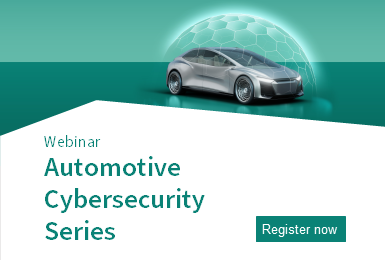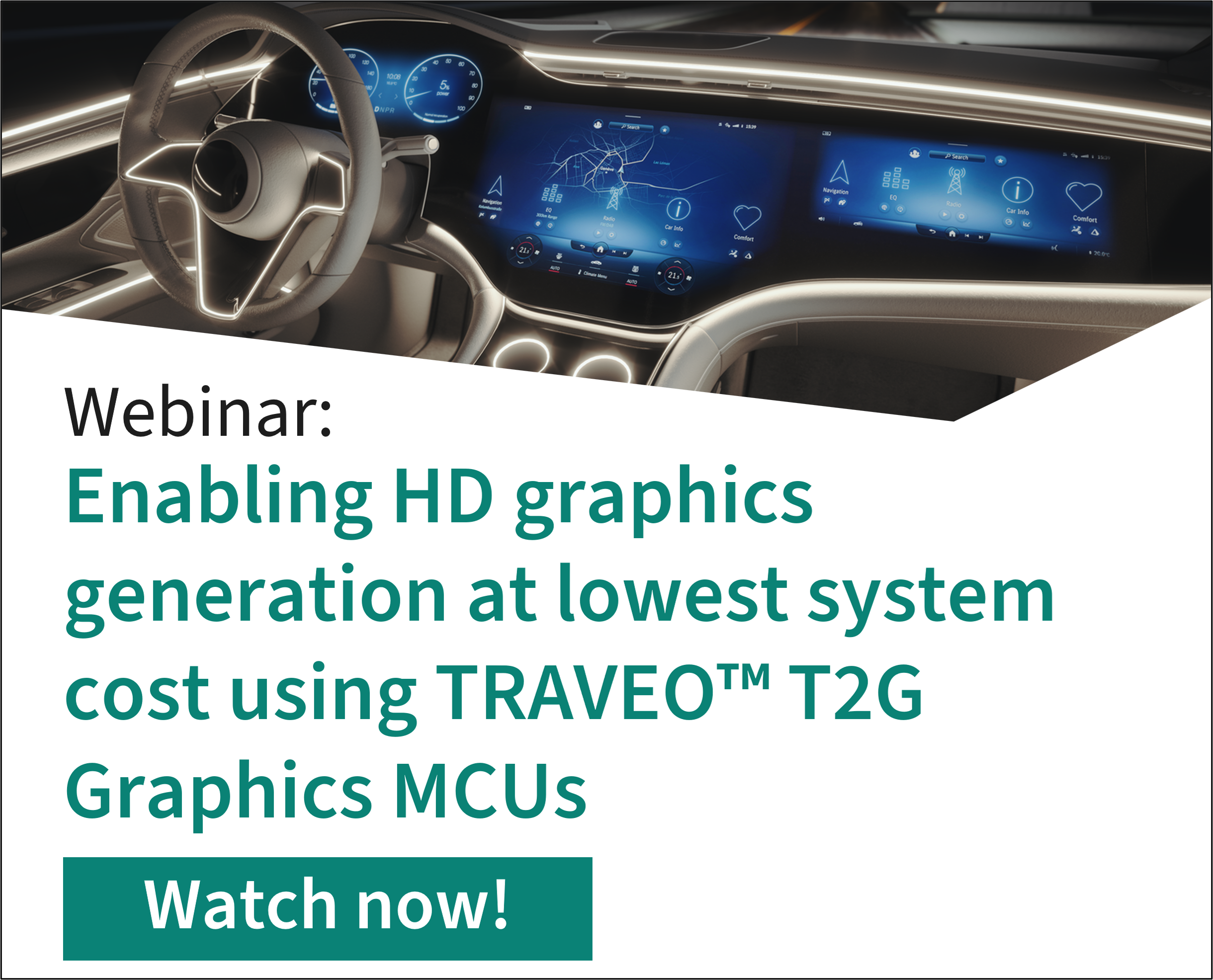Automotive instrument cluster
Rich visual user experience with the best cost-of-system ownership
Infineon's automotive instrument cluster solutions provide drivers with a centralized and easy-to-view display with all key driving information of the vehicle. Our instrument cluster dashboards can be securely updated and offer flexible customization. Benefit from our unparalleled portfolio for a scalable instrument cluster platform.
Infineon's scalable portfolio covers all instrument cluster variants
Infineon offers an unparalleled portfolio for a scalable automotive instrument cluster platform on the market. TRAVEO™ and TRAVEO™ T2G microcontroller product families provide the most extensive scalability, which covers the conventional gauge instrument cluster and hybrid instrument cluster, as well as the virtual instrument cluster. The option of line-based operation of the graphics engine within the microcontroller minimizes the memory required for graphics processing. With the optimized 2.5D graphics engine and extended density of embedded flash and video RAM, TRAVEO™ T2G graphic MCU can support the virtual instrument cluster design with high resolution up to 2880 x 1080. Infineon’s SEMPER™ flash and HYPERRAM™ memory products provide performance and density scalability to meet the requirements of different instrument cluster systems. These high-performance memory devices provide an ideal solution for real-time graphics and high-speed access. The low-pin count interface also reduces design complexity and PCB size to save design costs.
Infineon's IC solutions reduce R&D effort and increase competitiveness
System benefits with Infineon’s solutions:
- Full range of product offerings for car instrument clusters: MCU, memory, and power products.
- Scalable family solutions with wide compatibilities on both hardware and software support designs from low- to high-end systems with less design effort.
- TRAVEO™ T2G MCU enables scalable instrument cluster solutions with optimized system cost, from a 2.3" to 3.5" dot-matrix instrument cluster (resolution 320 x 240) up to a dual-display 8" to 12" virtual instrument cluster (resolution 1920 x 720).
- Hardware (TRAVEO™ T2G MCU, SEMPER™ flash, and HYPERRAM™) and software are both in compliance with ISO 26262 ASIL-B functional safety.
- Enhanced secured updatability with TRAVEO™ T2G MCU hardware security module (EVITA full HSM) and embedded read-while-write memory, plus external SEMPER™ flash, which allows for the execution of software (read) while programming (write) for secured firmware over-the-air (FOTA) updates.
Recommended memories for automotive infotainment systems
Infineon's parallel NOR flash devices and serial NOR flash devices feature automotive, proven MIRRORBIT™ technology to ensure data reliability and the high endurance required for frequent writes over the product lifespan. In addition, they provide fast system boot times and different densities to scale platforms. Infineon’s NOR flash solutions are AEC-Q100 grade 1 to 3 qualified to meet automotive standards for a wide operating temperature range.
Infineon's automotive F-RAM has no write delays, and data is immediately non-volatile. F-RAM offers a virtually unlimited endurance of 100 trillion read/write cycles. This enables much more compact and robust designs compared to conventional E2PROM solutions.
Infineon’s HYPERRAM™ 2.0 is a high-speed, low-pin-count, self-refresh dynamic RAM (DRAM) for high-performance embedded systems requiring expansion memory. HYPERRAM 2.0 offers HYPERBUS™ and Octal SPI interfaces that draw upon the legacy features of both parallel and serial interface memories while enhancing system performance and ease of design, as well as reducing system cost.
Superior human-machine interface with PSoC™4 CAPSENSE™
Infineon delivers highly sophisticated analog signal products for automotive HMI applications starting with the industry-leading programmable embedded system-on-chip PSoC™ family, which supports a wide range of automotive applications, and extending to the capacity sensing solution controllers CAPSENSE™ product line. You can add features to your design like capacitive touch buttons and sliders, all integrated and optimized in PSoC™ 4.

A digital virtual instrument cluster displays all driving information on the LCD or TFT screen. Such digital instrument clusters can be programmed to display the appropriate selection of virtual instruments according to the driver’s preferences; Dot Matrix instrument clusters are rapidly being replaced by the digital virtual instrument cluster. With a feature-rich graphics engine and flexible memory interfaces, Traveo™ II graphic MCU can support entry digital virtual instrument cluster with high-resolution up to 1920 x 720. This Infineon single-MCU based instrument cluster solution provides a competitive system cost compared to the traditional solutions that use application processor and MCU.
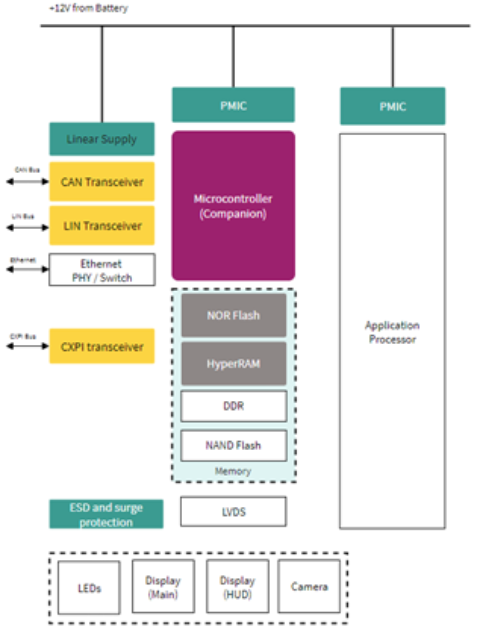
The premium virtual instrument clusters usually have a large display such as 12.3” with a resolution of 1920 x 1080. In this type of instrument cluster, a Vehicle-Interface-Processor (VIP) is needed to manage the automotive networks, safety, security, and power management, in addition to a dedicated graphic application processor. Infineon’s Traveo™ II MCU product family provides a broad portfolio of low-power, high-performance MCUs with HSM security and safety. Combining the memories, network devices, and power management products, Infineon's solution enables a robust instrument cluster system.
- Learn about SEMPER™ Solutions Hub, where you can find everything you need to build a development platform
- Know the requirements for accessing and downloading SEMPER™ Software Development Kits (SDKs)
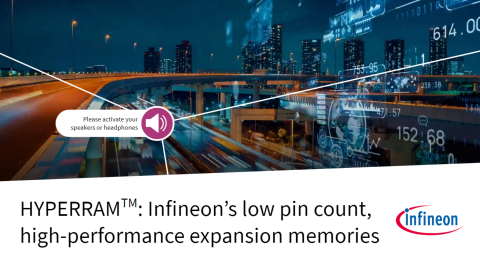
- Understand the need for an expansion memory and recognize the key attributes designers look for
- Describe the challenges with existing expansion memory options

Training topics:
- Get to know why systems require frequent updates, how this is done and how automotive systems try to ensure their security when they are updated
- Learn how AURIX™ families of microcontrollers support over-the-air software updates
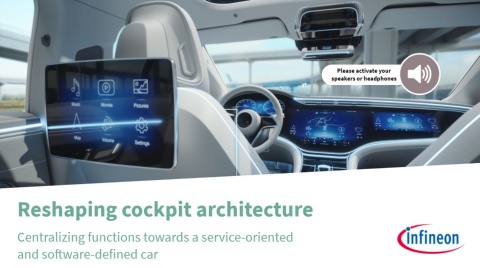
Training topics:
- Evolution of the cockpit architecture
- Importance of centrl modules (head unit and cockpit doman controllers)
- Infineon solutions and their components

DESC:
- Identify the main automotive market drivers and how OPTIREG™ aims to address these and
Recognize OPTIREG™’s product families and groups, as well as their main features and target applications

Description:
- Understand the evolution of the cockpit architecture
- Recognize the importance of the central modules like head unit and cockpit domain controllers and get to know Infineon solutions and their components
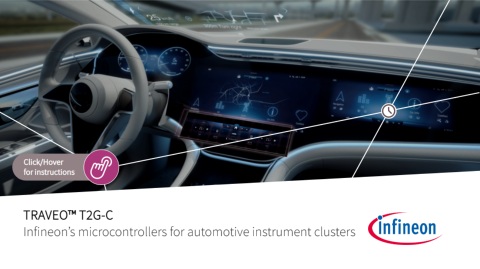
- Infineon has a successful history of supporting various graphics applications in cars with displays.
- Infineon's TRAVEO™ T2G microcontrollers are designed to meet size constraints, reduce costs, and improve performance and bandwidth for car displays, compared to system-on-chip solutions.

